Lunch with... Jimmy McRae
Rally champion who started late yet became a national star – not to mention passing on his natural skills to two rallying sons. Collectively they won eight British titles

Scotland might be one of the world’s most beautiful inventions, but you wouldn’t know it on a day like this. ‘Drookit’ and ‘dreich’ are suitable terms, Scots adjectives that translate as overwhelmingly wet and dreary. It’s not so much that you can’t appreciate the majestic local landscape, more that it’s tricky seeing one side of the road from the other. “Welcome to Lanark,” says Jimmy McRae. “It’s often lovely around here, but we also get this – and I think a combination of adverse weather and the surrounding road network helps drivers pick up essential skills. When I was young you could zap around the lanes at a million miles per hour and nobody would bother you. It’s a wee bit different nowadays, with more traffic and speed cameras, but in tricky weather I think drivers up here can still learn much more than somebody living in the centre of Manchester or Birmingham. You have to understand how to read the road and I think that definitely helped me.”
We’re at the Inn on the Loch, on the edge of town, to discuss McRae’s distinguished career and his role as the figurehead in one of motor sport’s most celebrated dynasties. Between them, Jimmy and sons Colin and Alister won eight British Rally Championships, while the boys also respectively scooped the world and Asia-Pacific titles. Alister emigrated some years ago to a much warmer Perth than its Scottish namesake – and his teenage son Max has already collected a string of kart championships in Western Australia.
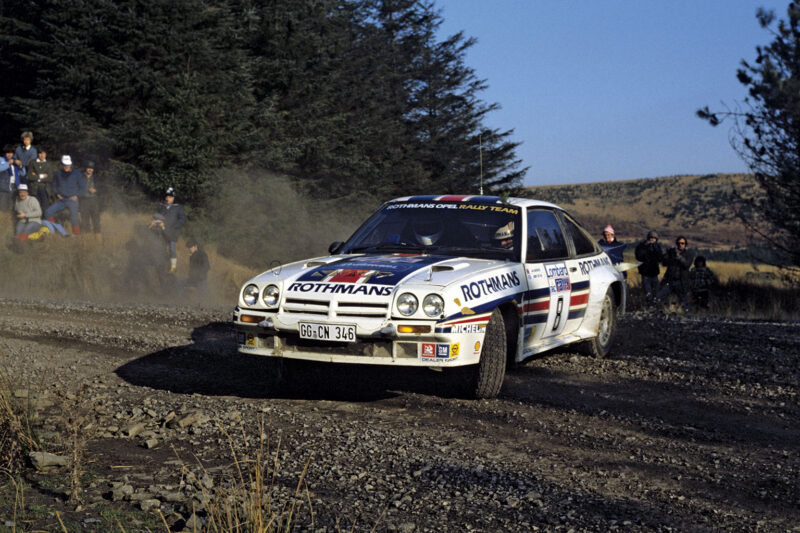
MacRae never had a proper crack at the WRC, but was a regular on the UK round. He finished third in 1983
Motorsport Images
But first things first: does he prefer to be Jim or Jimmy? McRae laughs. “I was definitely Jim when I started and I’m still Jim at home – unless my wife Margaret thinks I’ve misbehaved, in which case I’m suddenly ‘James’ – but as soon as I competed in England people called me Jimmy. I asked Andrew Cowan about it once and he told me they automatically began calling him Andy when he ventured south of the border – I think the same happened with Jim Clark, too. It just seems to be what happens. In a rallying context, then, I’m Jimmy.”
Formalities settled, he orders onion soup and chilli salmon, with half a pint of shandy to whet his appetite and a cappuccino to sign off. Next stop: the 1940s…
McRae grew up a few miles from Lanark in the village of Blackwood, where his father was a blacksmith. “I was interested in mechanical things and really got into motorbikes when I was 14 or 15 – scrambling and trials, mainly. I had a car when I was 17 and would go tearing around the Lanarkshire roads, but although I was interested in rallying I could never afford to do it. Two or three friends had rally cars and encouraged me to try it, but I simply didn’t have the money and thus stuck with my bikes. And I wasn’t really interested in co-driving – I’d previously been out with friends in their rally cars and decided very quickly that, if ever I had a go myself, it wouldn’t be from the passenger seat.”
Having served a plumbing and heating apprenticeship, McRae initially opted out of the trade and went instead to work in Glasgow as a surveyor – “earning less than I would have done as a plumber!” He rose to become chief surveyor, before buying an existing plumbing business in Lanark. “I’d always fancied running my own company,” he says, “and as things built up I found I had a bit more money to spend on motor sport – although by then I was already in my 30s.
“I can’t recall how much I paid – it was only a few hundred quid – but I found an elderly four-door Mk1 Ford Cortina, which had been a 1200 but was fitted with a Lotus twin-cam engine. It needed a bit of work doing, so I stripped it down, rebuilt it and made my debut on the 1974 Arbroath Stages. It was usually a fairly small event, but the organisers took over some of the stages from the Granite City Rally that had been cancelled because of an ongoing strike by fuel tanker drivers. That made it quite decent, so there I was in my Mk1 Cortina, never having done anything like this before, and I finished 11th. The first couple of stages were a bit Mickey Mouse, through farm roads, but once I got into the forests I thought, ‘Bloody hell, I like this.’
“The driving part seemed to come very naturally – things just clicked. I then entered the Border Counties Rally and finished fifth or sixth overall in the Cortina, after which somebody offered to buy it for twice what I’d paid. So I doubled my money and switched to a twin-cam Mk1 Escort.”
The Border Counties wasn’t just McRae’s second rally, but also that of the somewhat younger Malcolm Wilson. Their paths would cross again…
Does he feel his background on two wheels assisted his transition?
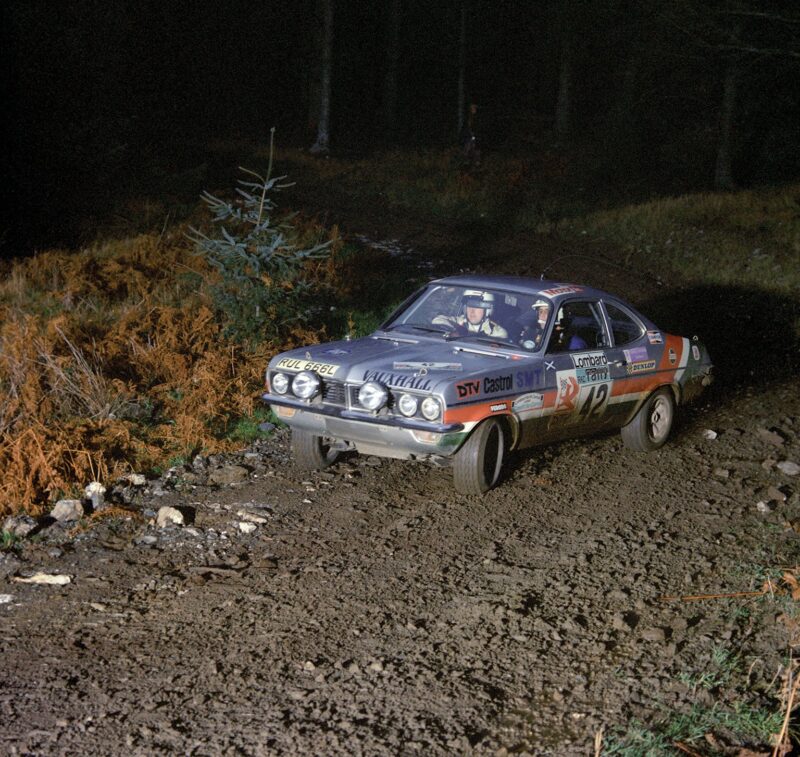
1976: Early days with Ian Muir and DTV, taking a Magnum to 12th overall on the RAC
Motorsport Images
“Definitely,” he says. “A lot of people think there’s a huge difference between bikes and cars, but when you’re driving quickly, looking for grip and to get the most out of the car, it’s all about balance – on four wheels or two. In trials riding and motocross you very quickly learn to look for grippier bits of road and I believe a lot of what I learned on bikes translated directly into what I did in rallying.”
McRae ran the Escort in 1975, winning an award as best newcomer in the Scottish Rally Championship, and then wondered what to do next. “At the end of ’75 I came very close to buying a Mk2 Escort, but the deal fell through. That’s when it occurred to me that if I wanted to get myself noticed I should probably try to find something that wasn’t an Escort – everybody else had one of those. So I approached SMT, a Vauxhall dealer in Perth whose managing director was rallying a Magnum for a bit of fun.
“I put forward a proposal and they offered to get a Magnum from the Vauxhall press fleet at Luton and convert it to Group 1 specification, as per the regulations at that time. I received a bit of stick from guys like Donald Heggie and Drew Gallagher, who had quick BDA Escorts in Scotland. They wondered what on earth I was doing, but it was simply my way of trying to get noticed. I started in late 1974, ran my own car in ’75, had a sort of semi-works deal in ’76 and by ’77 I’d been hired by Dealer Team Vauxhall to do a programme of national rallies. I’m not sure I was being paid, but I was no longer having to spend anything on my rallying – and my career went from there. I often wonder whether I’d have progressed in the same way if I’d bought that Escort – would Ford have spotted me and offered a deal? I’ve no idea, but there wasn’t much of a gap between my starting the sport and receiving manufacturer support. It all seemed to go pretty quickly.
“It was a good time to be involved, too, because in the late 1970s basically everybody was coming to compete in the UK – Stig Blomqvist, Ari Vatanen, Markku Alén, Hannu Mikkola… they were all there and it was pretty much as competitive as the world championship.” He was paired with some top-line co-drivers, too, including Mike Nicholson, Ian Grindrod and Rob Arthur.
McRae stayed with Vauxhall’s then-parent General Motors until 1985, driving Magnums and Chevettes before moving on to Opel Asconas and Mantas. He won the British Rally Championship for the first time in 1981, repeating the feat in 1982 and 1984 while also taking back-to-back Irish Tarmac titles in 1980 and ’81 and finishing second (to fellow Ascona driver Antonio Fassina) in the ’82 European championship. “I’m pretty sure I could have won that,” he says, “but it wasn’t part of my main programme and I was finding sponsors on an event-by-event basis. Opel finally got more involved once it became apparent that I might be able to win it, but if they had committed a little earlier…
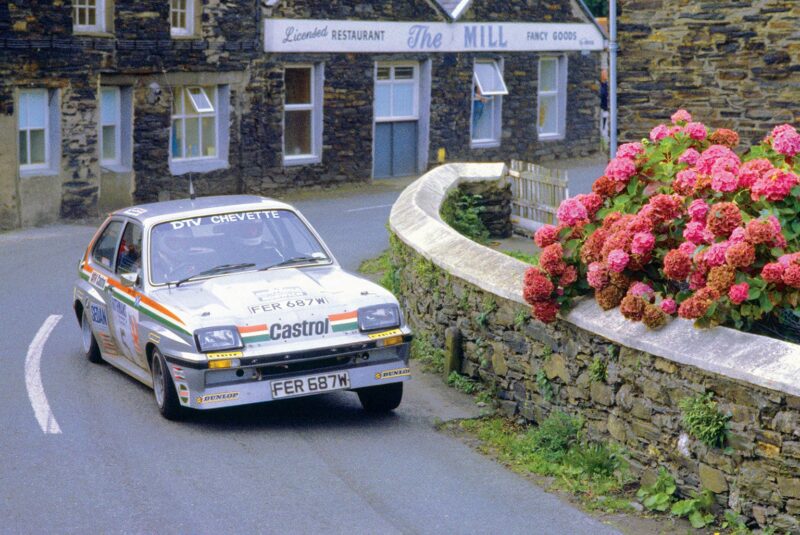
McRae and Mike Nicholson head for third on the 1980 Manx Rally in their Chevette HSR. This was the year of the Scot’s first Tarmac title
Motorsport Images
“One of the unfortunate things for me is that my late start meant I never really had a chance to tackle the world championship. I was locked into the UK because I’d done well and Dealer Team Vauxhall was funded by national sales outlets, who wanted me rallying at home. With GM Dealersport it was the same thing, the money coming from Opel dealers who wanted the car to be seen on British soil. I did a few WRC events, bits and pieces here and there, but regret that I never had a proper crack at it. I wonder what might have happened if I’d started five years earlier, but it’s impossible to know.
“I was lucky to drive some very fine cars, though. When the Chevette HS came out it was the best thing I’d ever driven – and the following HSR was an improvement on that. I then went from the Chevette to an Ascona, which Tony Pond told me equated to leaving cars behind to join the bus and truck division. It was big compared with an Escort or a Chevette, but it also handled well – it was beautifully balanced. And then the Manta came along and that was another step forward. They were normally aspirated and had only two-wheel drive, but the late Mantas were absolutely cracking cars. They weighed 1000 kilos and had 260 very usable bhp, which made them brilliant on asphalt.”
In 1986 McRae switched to an MG Metro 6R4, again concentrating on the UK. “That was the only Group B car I drove,” he says, “and it’s another case of ‘what might have been’. There was talk of Rothmans backing me to drive a David Richards-run 6R4 in a decent programme of WRC events for ’87, but then Group B was banned and I was back to square one. That’s probably when I began to accept that I was never going to get a decent world championship opportunity.”
He continued in the British championship until the end of the end of the 1980s, taking two more titles at the wheel of a Ford Sierra RS Cosworth, then scaled back his own rallying commitments to start helping a younger breed of McRae.
“From the end of 1989 I didn’t have a works – or at least properly sponsored – drive, mostly because I took the decision to start helping out Colin and then Alister. I was hustling the likes of Ford and David Richards to get drives for Colin rather than myself. The boys became my focus.
“From the moment I began rallying, working at home in the garage on the Cortina, then the Escort and my first Magnum, Colin would always be there, watching what I was doing. He could be a pain in the backside at times, but his interest was obvious. Alister was more into bikes. He could have made a name for himself in motocross, but – a typical problem – he injured his knees and was advised to pack it in. Colin started rallying as soon as he could, aged 17, but Alister came to it a bit later. I think he was quite happy ploughing a different furrow to Colin and I, but then circumstances obliged him to move across.
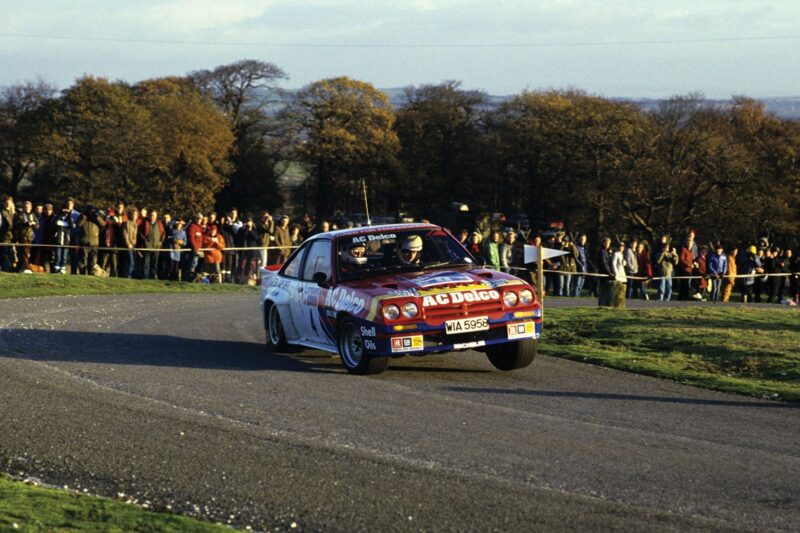
En route to seventh on the 1984 RAC Rally, his Manta 400 co-driven by Nicholson
Motorsport Images
“My other son Stuart showed absolutely no interest in the sport, but at one point – when we were running McRae Motorsport up here in Lanark – he walked in one day and said he might fancy having a go. Alister’s old Nova 1600 was in the garage at the time, so I said that we’d pull it out and that the boys would assist. Alister and Colin told Stuart that he’d need to pitch in, then cleaned the car up, put it on jacks and set to work. I think Stuart turned up for four hours on the first night, two on the second and then phoned in on the third to say he couldn’t make it. I believe that happened twice, at which point the other two put the car down on its wheels and rolled it back into the corner. Stuart was supposed to do a Scottish championship event, but it never happened. I think Colin and Alister took the decision for him: if he wasn’t working on the car, he wasn’t driving it!
“I actually co-drove for Colin at the start of his career, on the Galloway Hills Rally in his 1300 Nova. He probably frightened me, but I realised pretty quickly that he had talent. But it wasn’t just his speed, it was his mechanical sympathy towards the car. That was really special, particularly when you considered how quickly it was going. That marked him out – as did the results he got with that Nova…” When Jimmy scored his only win on the Scottish Rally, with a Sierra Cosworth in 1988, Colin was ninth overall in the little Vauxhall, ahead of many much more powerful cars. “I knew if he could put it all together he would get to the top, but even with such attributes it was quite a leap from there to becoming world champion.
“When Alister came into rallying people said he was more calculating, whereas Colin would go flat out from the start. But if Alister had been given the right break at the right time, which should have happened at the end of 1995, when he won the British title and then finished fourth on the RAC, I think he also had world champion potential. While Colin’s approach was perhaps a bit like that of Ari Vatanen – go out there and do it – Alister was more like a Carlos Sainz. He’d work away and build up his speed.
“Whatever the two boys did, whether it was fun karts, motocross or quad bikes, Colin would be on it almost straight away but Alister would sometimes be quicker by the end of the day. At one point I know Carlos Sainz said he wouldn’t want Alister as a team-mate at Ford, because he felt he’d go away and exchange technical information with Colin, but that was a load of crap. If Alister wanted to beat anybody, it would be his brother!
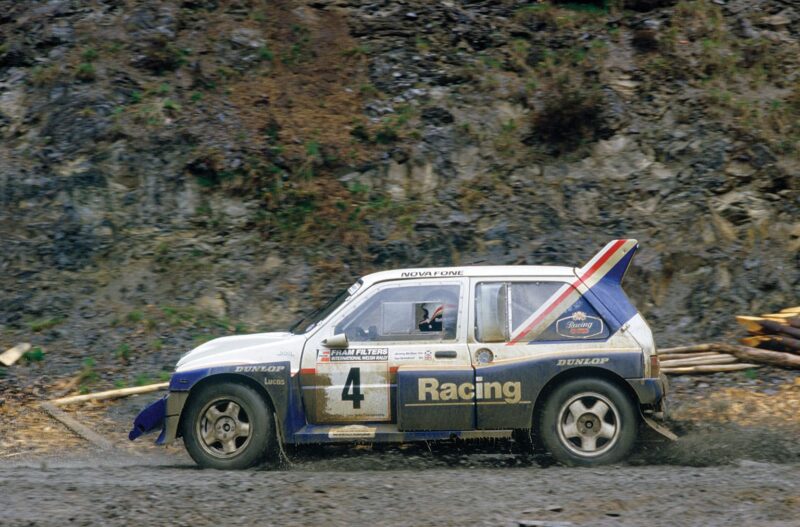
McRae had his only taste of Group B in a Rothmans Metro in 1986, finishing fourth in the BRC
Motorsport Images
“I do take a great deal of pride in what the family has achieved. Between us Colin, Alister and I won the British title eight times in 14 years – quite incredible.
“Two of Colin’s rallies particularly stand out for me. One was the 1999 Safari, because the Ford Focus was new – this was only about its third event, so nobody thought the car would last. I certainly didn’t. But as each stage went by you could see he was getting into a rhythm. He didn’t set a single fastest stage time, but settled down to a practical pace and won the event. The other was the 1995 Rally GB. Because he’d had team orders imposed on him in Spain two weeks beforehand, very much against his will, he set about his home event with particular determination. Even when he lost significant time with a puncture on one stage, he told me it wouldn’t be a problem – and it wasn’t. His confidence was absolute.
“I think that was one of Alister’s best rallies, too. We hired an Escort from Malcolm Wilson –Malcolm later admitted it wasn’t quite up to the spec of the car he was driving – but Alister finished fourth, beaten only by the factory Subarus. That was a really good performance, but I’m not sure many people noticed because everybody was focusing on Colin becoming Britain’s first world champion. And hardly anybody mentions Alister’s success in the British championship that same season. If he’d landed the works Ford drive the following year, I think we’d have seen some real fireworks between them – they were hell-bent on beating each other, whether they were playing ludo, riding bikes or driving, yet they always remained the best of pals.
“I’m not sure whether it’s widely known, but Colin had signed a deal to do the 2008 Dakar Rally with BMW and had also been talking to Prodrive about reviving his WRC career. I often wonder what might have happened if he’d lived, because I’m sure he could have won Dakar. He’d done it a couple of times with Nissan and set fastest stage times, and he’d proved on the Safari that endurance events suited him, but we’ll never know.”
While contesting a patchwork programme of events during the 1990s – he won the 1997 Manx Rally in a 6R4 – Jimmy also took up historic rallying, with which he remains engaged, and also tried a spot of circuit racing. He drove Hugh Chalmers’ BMW M3 in a few British Touring Car Championship races in 1990 and was also invited by TVR to compete in the Tuscan Challenge.
“I think I first tested the Tuscan at Cadwell Park,” he says. “The car felt okay and I came back to the pits to tell the mechanics as much – and they were all smiling when I pulled in. Apparently I’d lapped as quickly as anybody, which was a nice surprise. I then qualified on pole for my first race, on the Brands Hatch Indy circuit, but found I wasn’t quite so good when it came to mixing it with the others in a racing situation. I wasn’t used to people blocking me mid-corner. I’d never really thought about racing before, simply because I’d been too busy with my rallying, but I did enjoy it.
“I also did a couple of events in Caterhams, though the enduring memory is probably driving into a shower of mudguards and assorted other debris at the first corner and wondering what I’d let myself in for…”
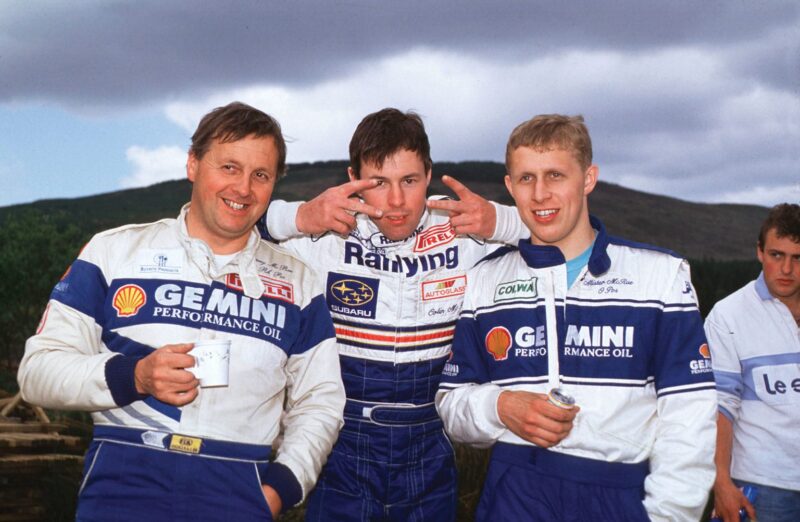
The family McRae in 1991
Motorsport Images
In the main, though, he has spent the most recent phase of a long career as a historic rally devotee, driving such as Mk2 Ford Escorts. Porsche 911s and – perhaps inevitably, given his background – a Vauxhall Firenza. There was a chance, though, that he would tackle the 2017 Wales Rally GB in a Vauxhall Adam – the first time since 2004 that he’d have contested the event in contemporary machinery.
“I was asked if I wanted to take part and said ‘yes’, but I didn’t want to do the national event, following the world championship runners, because I’ve done that a couple of times in recent years and the four-wheel-drive cars really churn up the stages. By the time the national runners start you can do little more than drive through steadily or you’ll break the car. In 2016 I was on for a good result, chasing a class win in a Vauxhall Firenza, and on the final stage a ball-joint broke because the car was snagged by a rock.
“I was then offered the chance to run the Adam as team-mate to Chris Ingram. I wasn’t keen at first, because I hadn’t competed in a front-wheel-drive car for many years, but then I had a think and decided to do it if I could get a day’s testing. In the end they didn’t think they’d be able to get the British-spec gravel bits for the car and there was going to be no time for testing, so I felt it was best not to do it at all if I couldn’t do it properly – but that didn’t become apparent until about 10 days before the start.”
He then went off to do the Roger Albert Clark Rally in a V8-powered Firenza, finishing a class-winning 13th as the leading non-Escort driver. “It’s a great event,” he says (and, indeed, one he won in 2006), “a real reminder of what the RAC used to be like. Four days, night-time stages and so on. When I looked at it in the cold light of day I thought, ‘Shit, why on earth am I doing this?’ – but we got a fantastic result, even though a V8 Firenza probably wasn’t the best car for slippery conditions.
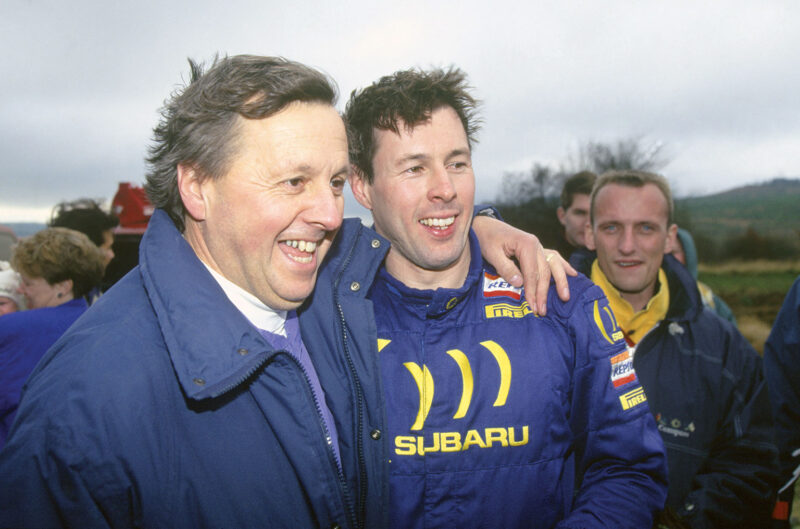
Celebrating son Colin’s victory on the 1994 RAC Rally. One year later he would win on home soil again to take the WRC title
Motorsport Images
“There are times, when it’s dark and you’re struggling on the ice, when you think, ‘I could be sitting at home with my feet up’, but that passes quickly and I still get a buzz from doing well, so I’ll carry on for as long as I enjoy it. I am concerned, though, about the way historic rallying has been going, with cars running last through stages after the main event has passed. There was some sort of safety theory – that running the historics first was risky, because it might lead to spectators dashing in at the last minute to watch the main event – but I think it’s the other way around. There are often more people coming in to watch the historics than there are to watch the main rally! Hopefully a sensible compromise will be reached.
“Historics don’t cut up the stages as much as the more modern cars – and people don’t want to wreck their Minis and Porsche 911s on badly rutted tracks, so entries have dropped. Historics still run first on the Pirelli Rally and everything works fine, so I hope other events will follow suit.”
Given his penchant for endurance-style formats, how does he feel about the condensed nature of the modern WRC? His eyebrows rise and might be rising still.
“I feel sorry for the mechanics in modern rallying,” he says. “They service the cars at seven or eight in the morning and might not see them again for a few hours. What is there for them to do in the service park apart from twiddle their thumbs all day? On the Roger Albert Clark Rally we still have service crews following the event around and you can see the smiles on the mechanics’ faces. They love it. Okay, perhaps you couldn’t do that for a full world championship rally, but today every WRC event is pretty much the same – you do three stages, then come back to service, do the same three stages again, back to service and you’re through for the day. The next day will be the same. Service, three or four stages, back in. I think we had the best of rallying in my heyday.
“If I were in charge I’d encourage event organisers to set out their own itineraries, rather than being told what to do. I’m sure the likes of Portugal could put on a different type of event from some of the others. The current cloverleaf format is mega-competitive when you see the top three cars separated by less than a minute, but I think we need to go back to having different types of event.
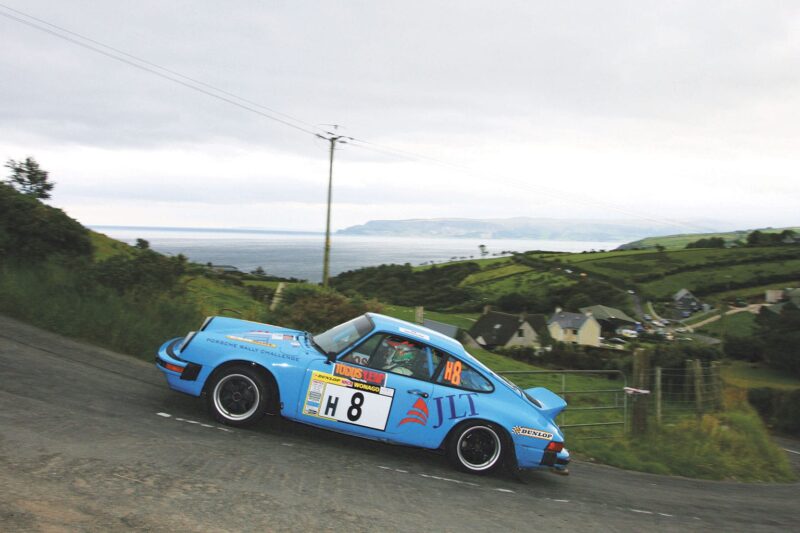
McRae has been active in historic rallying for more than 20 years. Here pictured on the Ulster Rally in 2011
Motorsport Images
“I was also one of the guys who thought they were going the wrong way when they brought in the current cars, with extra power and more aero. I concede that they’re fantastic to watch, but where’s it all going in the future? Quite a few guys used to buy ex-works cars to use on national events, but they’re not going to buy these because they won’t be able to run them. We’re going to end up with R5-spec cars being used at national level and then a huge step up to the WRC, where only the big factory teams will have the means to run competitively.
“I probably feel more upbeat about the British Rally Championship, which has been through a rough patch but has a bit of atmosphere building up again thanks to a number of young guys coming in. There has definitely been a big improvement and young Finns are starting to come over once more, which is how it used to be.
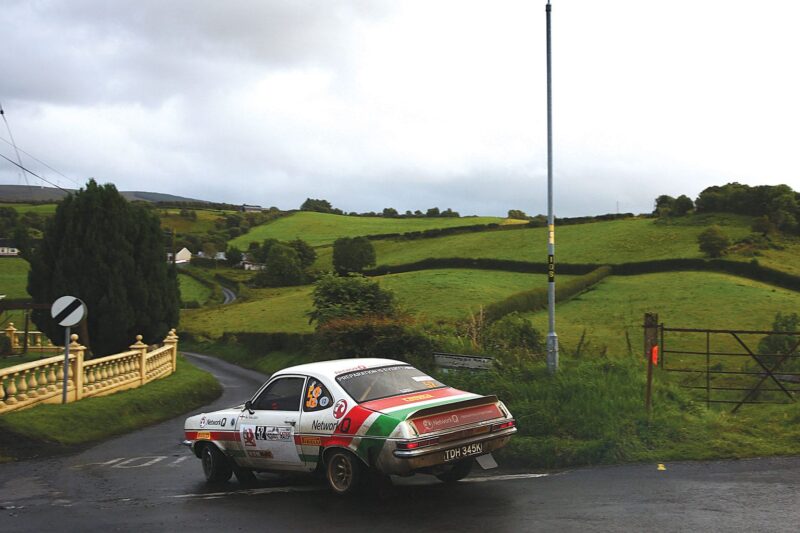
Competing in historic events keeps McRae in touch with his Vauxhall roots. Here in 2017
Motorsport Images
“I always enjoyed the ultra-competitive element. Russell Brookes and Tony Pond were the main two rivals for me – Russell and I always got on much better than the press made out, the same situation that Colin and Richard Burns later encountered. It was good having somebody so competitive in the same team, because it drew the best out of both of us. And if Group B had continued into 1987 I’d have been up against Malcolm Wilson and Tony in 6R4s – I was definitely up for that.”
Thirty years on, his competitive zest remains intact. “As things stand,” he says, “I have no idea what my programme will be for 2018. I hope to do some historic rallies with a 2.3-litre Magnum – maybe the Border Counties and the Pirelli, then we’ll see how things go from there. Every time I get a decent result, Margaret says, ‘Oh no, not again. I suppose this means you’ll be carrying on…’
“In my mind I’m still a young fella – and you have to remember that I came to rallying quite late. As far as I’m concerned, that means I can finish late…”
Jimmy McRae career in brief
Born 28/10/43, Lanark, Scotland
1974 Rally debut in Mk1 Ford Cortina 1975 Ford Escort TC 1976-77 Vauxhall Magnum; WRC debut on ’76 RAC 1978-80 Vauxhall Chevette; Irish Tarmac champion in ’80 1981 Opel Ascona; first BRC title; successful defence of Irish Tarmac crown 1982 Opel, Ascona; British champion; 2nd in European Rally Championship 1983 Opel Ascona & Manta; 3rd in BRC; 4th in ERC 1984 Opel Manta; BRC winner 1985 Opel Manta; 2nd in BRC 1986 Metro 6R4; 4th in BRC 1987-89 Ford Sierra RS Cosworth; two more BRC titles, 3rd in ’89 1990-93 Selected contemporary rallies 1994-present Historic rallies 2014 Vauxhall Firenza; class winner, British Historic Rally Championship 2018 Schedule TBA…
